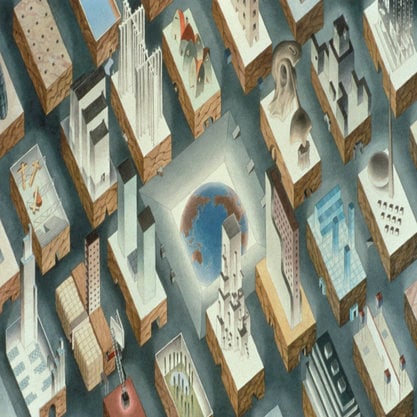Article
Mavo By Robinson, Joel
Article
Mavo was a coterie of vanguard artists, designers, and poets centered on Tokyo between July 1923 and late 1925. It sought to politicize art amid the repressive ultra-nationalist atmosphere of interwar Japan. As such, it was the first Japanese movement to break with conventional academic practices like painting and sculpture, and explore the intermedial spaces of collage, assemblage, architecture, theater, dance, typography, and the mass media. Some of these artists, like Masamu Yanase and Shūzo Ōura, had formerly worked in a Cubo-Futurist idiom. Yet, Mavo signaled a turn away from the hegemony of Paris and salon painting, toward a dialogue with the anti-art of German Dadaism and Russian Constructivism.



